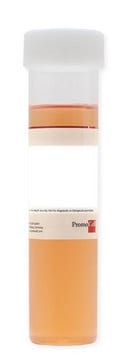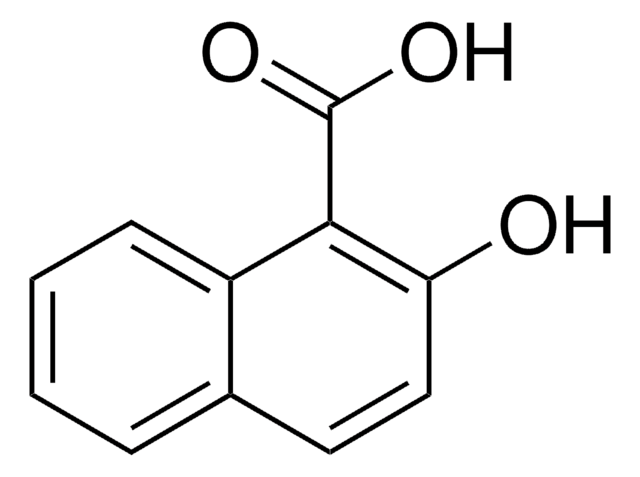W387101
4-Methyl-2-oxopentanoic acid sodium salt
97%
Sinonimo/i:
Sodium 4-methyl-2-oxovalerate, α-Ketoisocaproic acid sodium salt, 4-Methyl-2-oxopentanoic acid sodium salt, 4-Methyl-2-oxovaleric acid sodium salt, Ketoleucine sodium salt
About This Item
Prodotti consigliati
Origine biologica
synthetic
Saggio
97%
Punto di fusione
275 °C (dec.) (lit.)
applicazioni
flavors and fragrances
Documentazione
see Safety & Documentation for available documents
Allergene alimentare
no known allergens
Organolettico
buttery
Stringa SMILE
[Na+].CC(C)CC(=O)C([O-])=O
InChI
1S/C6H10O3.Na/c1-4(2)3-5(7)6(8)9;/h4H,3H2,1-2H3,(H,8,9);/q;+1/p-1
IXFAZKRLPPMQEO-UHFFFAOYSA-M
Cerchi prodotti simili? Visita Guida al confronto tra prodotti
Avvertenze
Warning
Indicazioni di pericolo
Consigli di prudenza
Classi di pericolo
Eye Irrit. 2
Codice della classe di stoccaggio
11 - Combustible Solids
Classe di pericolosità dell'acqua (WGK)
WGK 3
Punto d’infiammabilità (°F)
Not applicable
Punto d’infiammabilità (°C)
Not applicable
Dispositivi di protezione individuale
Eyeshields, Gloves, type N95 (US)
Certificati d'analisi (COA)
Cerca il Certificati d'analisi (COA) digitando il numero di lotto/batch corrispondente. I numeri di lotto o di batch sono stampati sull'etichetta dei prodotti dopo la parola ‘Lotto’ o ‘Batch’.
Possiedi già questo prodotto?
I documenti relativi ai prodotti acquistati recentemente sono disponibili nell’Archivio dei documenti.
Il team dei nostri ricercatori vanta grande esperienza in tutte le aree della ricerca quali Life Science, scienza dei materiali, sintesi chimica, cromatografia, discipline analitiche, ecc..
Contatta l'Assistenza Tecnica.







![1-[1-(2-Phenylethyl)piperidin-4-yl]methanamine AldrichCPR](/deepweb/assets/sigmaaldrich/product/structures/126/015/e44a3961-27de-4b43-ab31-b785c5cd7d6a/640/e44a3961-27de-4b43-ab31-b785c5cd7d6a.png)

